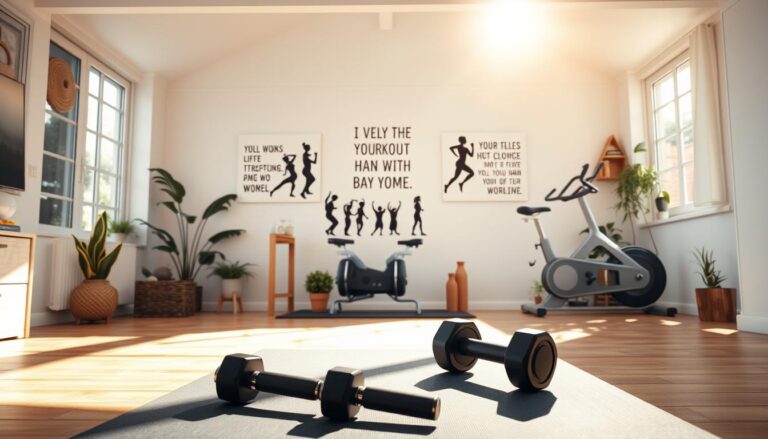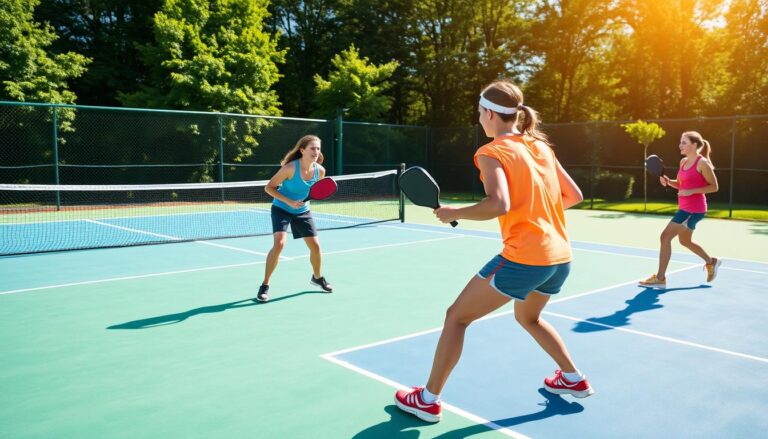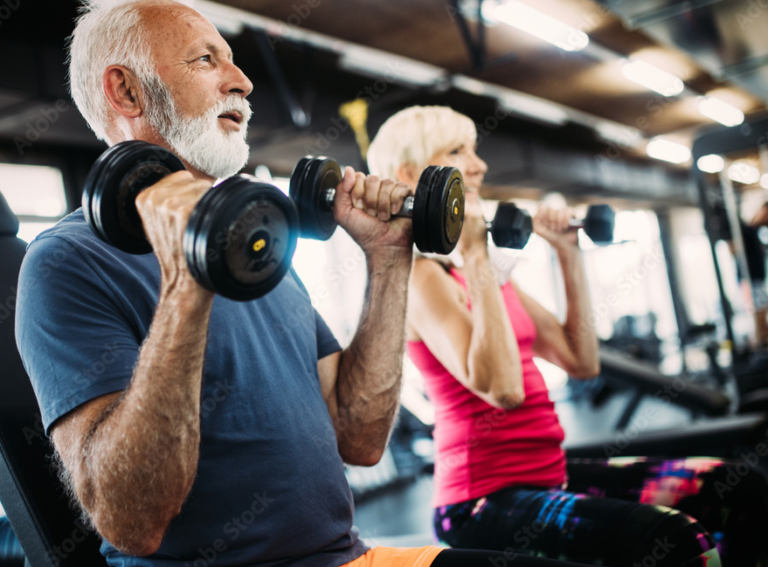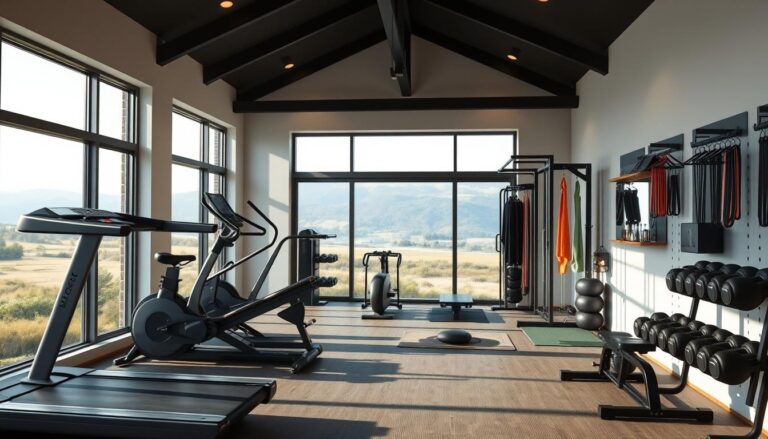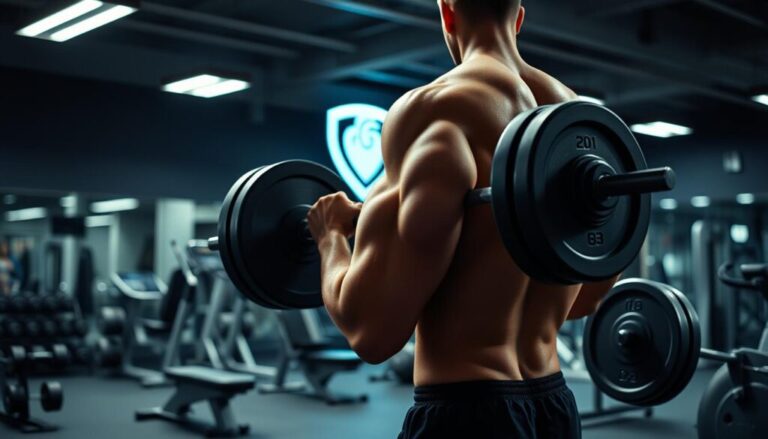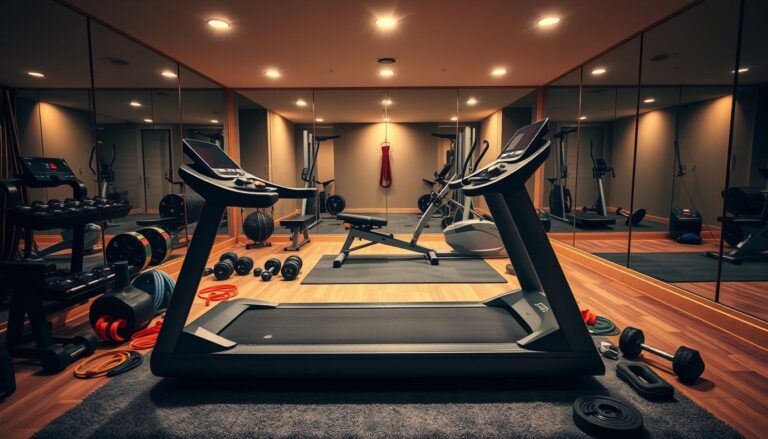Hydrate Right: The Best Strategies for Workout Hydration
Staying hydrated is key for athletes and anyone who works out often. Our bodies are made up of 60% water. Hydration affects almost every part of our body.
It’s important to drink water before, during, and after you exercise. This helps avoid dehydration. Using a good water bottle, like a Nalgene water bottle, can help keep you hydrated during workouts.
Key Takeaways
- Understand the importance of hydration for workout performance and recovery.
- Learn effective workout hydration strategies to stay hydrated.
- Discover how to maintain optimal hydration during exercise.
- Explore the role of water bottles in hydration.
- Implement hydration tips to enhance your workout routine.
The Science of Workout Hydration and Why It Matters
Proper hydration is key for good workout routines. It affects muscle function and keeping your body cool. When you exercise, you lose water through sweat. If you don’t replace it, you can get dehydrated.
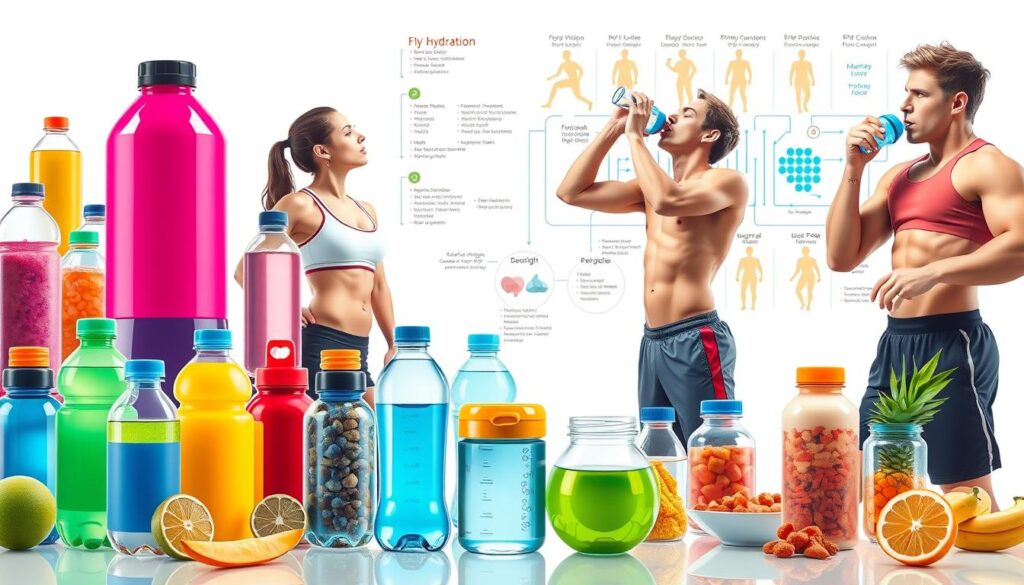
How Water Fuels Your Muscles During Exercise
Water is crucial for muscle work and contraction. It carries nutrients and oxygen to cells and takes out waste. With enough water, your muscles work better during exercise.
The Performance Impact of Even Mild Dehydration
Even a little dehydration can hurt how well you perform. It can make you less strong, fast, and last longer. It can also cause heat-related illnesses, which are serious and can be deadly.
Cognitive Effects of Proper Hydration
Hydration affects not just your body but also your mind. Drinking enough water helps you focus, stay alert, and make better decisions. Staying hydrated keeps your mind sharp during exercise.
Knowing how hydration works helps you stay hydrated during workouts. This improves your performance and lowers the chance of dehydration problems.
Recognizing Dehydration: Warning Signs During Exercise
It’s important to catch dehydration early to avoid its negative effects on your workout. Drinking enough water is key to keeping your performance up and staying healthy.
Early Physical Indicators You Need to Drink More
Look out for dark yellow urine, fatigue, and decreased coordination as signs you need more water. These signs mean your body is losing more fluids than it’s getting.
Other signs include dizziness, headaches, and dry mouth. If you notice these, drink water right away.
Mental Fog and Concentration Issues
Dehydration can also mess with your mind. Mental fog and concentration issues show your brain isn’t getting enough water.
How to Monitor Your Hydration Status
Checking the color of your urine and tracking your body weight before and after exercise can help. This way, you can see if you’re staying hydrated.
By watching for these signs and staying hydrated, you can keep your performance high. This also lowers the chance of dehydration problems.
Calculating Your Personal Hydration Needs
Staying hydrated is key for athletes. Finding out how much water you need is the first step. You must think about several things that affect your water needs.
Base Hydration Requirements by Body Weight
To start, drink 17-20 ounces of water 2-3 hours before you exercise. Your body weight is a big factor in how much water you need. A good rule is to drink 0.5-1 ounce of water per pound of body weight every day.
Activity-Specific Water Intake Formulas
How much water you need changes with the activity. For example, drink 7-10 ounces of water every 10-20 minutes while exercising. The harder and longer your workout, the more water you’ll need.
Adjusting for Environmental Factors
Weather also affects how much water you need. In hot and humid weather, you lose more water through sweat. It’s smart to watch your sweat rate and drink more water if needed.
- Consider your body weight when calculating hydration needs
- Adjust water intake based on activity level and duration
- Account for environmental factors like temperature and humidity
Pre-Workout Hydration Protocol
Hydration is key for exercise performance. A good pre-workout hydration plan can really help. Drinking enough water before exercise boosts your performance and health.
The 24-Hour Hydration Timeline Before Exercise
Start drinking water all day, not just before your workout. Aim for 16-20 ounces of water or sports drink 2-3 hours before. This lets your body absorb it well and prevents dehydration during exercise.
Optimal Pre-Workout Fluid Choices
Choosing the right fluid is as important as how much you drink. Water is fine for light or short workouts. But for intense or long workouts, use a sports drink with electrolytes to keep your electrolyte balance.
“Proper hydration is key to unlocking peak performance. Drinking the right fluids at the right time can significantly impact an athlete’s ability to perform at their best.”
Avoiding Hyponatremia: When Too Much Water Becomes Dangerous
While staying hydrated is important, too much water can cause hyponatremia. This is when your blood sodium levels get too low. To avoid it, mix your water intake with electrolyte-rich drinks, especially for long or intense activities.
| Fluid Type | Recommended Intake | Best For |
|---|---|---|
| Water | 16-20 oz, 2-3 hours pre-workout | Low-intensity, short workouts |
| Sports Drink | 16-20 oz, 2-3 hours pre-workout | High-intensity, long workouts |
Key Takeaway: A good pre-workout hydration plan is more than just drinking water. It’s about timing and choosing the right fluids to improve performance and avoid health risks like hyponatremia.
The Best Way to Get and Stay Hydrated During Workouts
Staying hydrated during workouts is key for good performance and recovery. Proper hydration helps keep your body working well and aids in recovery.
Strategic Sipping vs. Gulping: What Science Says
Studies show that sipping water is better than gulping it during exercise. Sipping keeps your hydration steady, avoiding stomach problems from gulping too much water.
Timing Your Water Intake During Different Exercise Phases
When to drink water matters a lot. Drinking water regularly, not all at once, keeps you hydrated. Athletes should match their hydration to how much they sweat.
Practical Tips for Maintaining Hydration in Motion
To stay hydrated, drink water every 15-20 minutes. Check your urine color to see if you’re drinking enough. Adjust how much you drink based on the weather.
With a strategic hydration plan, you can improve your performance and reach your fitness goals.
Post-Exercise Rehydration Strategies for Optimal Recovery
Rehydrating after exercise is key for recovery and top performance. When you work out, your body loses water and important electrolytes through sweat. It’s crucial to replace these to get your body back in balance and help your muscles recover.
The Golden Window for Fluid Replacement
The time right after exercise is called the “golden window” for rehydration. Your body is most ready to take in fluids and nutrients during this time. It’s best to rehydrate within 30-60 minutes after exercise to help your body recover fully.
Balancing Water with Electrolytes After Intense Sessions
After hard or long workouts, you lose more than just water. You also lose important electrolytes like sodium, potassium, and calcium. It’s important to balance water intake with electrolyte replenishment for effective rehydration. You can do this with drinks or supplements that have electrolytes.
Monitoring Recovery Through Hydration Markers
To make sure you’re rehydrating right, watch your body’s hydration signs. Look at urine color, changes in body weight, and how you feel physically. Dark urine and losing a lot of weight mean you might not be drinking enough.
Using these rehydration tips after exercise helps athletes recover better. It also boosts their performance in future workouts and keeps them healthy.
Why Nalgene Water Bottles Are the Athlete’s Hydration Companion
Nalgene water bottles are a top choice for staying hydrated during workouts. They are built to keep up with athletes’ tough training schedules. Nalgene bottles are designed to meet these needs.
Durability Features That Withstand Gym Conditions
Nalgene water bottles are known for their toughness. They are made from top-notch materials that can handle frequent use in different places. This means they can be athletes’ reliable friends through many workouts.
Key durability features include:
- Resistance to cracks and breaks
- Ability to withstand extreme temperatures
- Leak-proof design for secure carrying
Wide-Mouth Design Benefits for Quick Refills
The wide-mouth design of Nalgene bottles makes refilling and cleaning easy. This is especially helpful during intense workouts when staying hydrated quickly is key. The design also lets you add ice, keeping drinks cool for longer.
Volume Markings for Tracking Daily Intake
Nalgene bottles have volume markings to help athletes keep track of their water intake. This is important for staying hydrated. It lets athletes see how much they’ve had and adjust as needed.
BPA-Free Materials for Health-Conscious Athletes
Nalgene water bottles are made from BPA-free materials. This means athletes can drink safely without worrying about harmful chemicals. Using BPA-free materials shows Nalgene’s commitment to athletes’ health and well-being.
| Feature | Benefit |
|---|---|
| Durability | Withstands gym conditions and frequent use |
| Wide-Mouth Design | Easy refilling and cleaning |
| Volume Markings | Accurate tracking of daily water intake |
| BPA-Free Materials | Safe hydration without chemical exposure |
Customizing Your Nalgene for Different Workout Environments
Changing your Nalgene for various workouts can really help with staying hydrated. Whether you’re running, cycling, or lifting weights, making your Nalgene fit your needs can boost your performance.
Insulated Sleeves for Temperature Control
Using insulated sleeves is a great way to customize your Nalgene. They keep your drink at the right temperature, whether it’s hot or cold. This is especially helpful for athletes training in extreme weather.
Attachment Options for Runners and Cyclists
Attachment options like bottle holders or carabiners are super useful for runners and cyclists. They let you carry your Nalgene bottle easily, so you can stay hydrated without holding it.
Size Selection Guide for Various Activities
Picking the right size Nalgene bottle is key. The size you need depends on the activity. For short workouts, a smaller bottle might be better. But for longer activities, you’ll want a bigger one.
Cleaning and Maintenance for Optimal Taste
No matter how you customize it, keeping your Nalgene clean is vital. Wash it with soap and warm water every day. Also, sanitize it now and then to stop bacteria from growing.
| Activity | Recommended Nalgene Size | Additional Customization |
|---|---|---|
| Running | 32 oz | Attachment clip |
| Cycling | 32 oz | Bottle cage |
| Gym Workout | 18 oz | Insulated sleeve |
Beyond Water: Electrolytes and Enhanced Hydration
Hydration is more than just drinking water. It’s about balancing essential electrolytes, especially during long workouts. Water keeps our bodies working, but electrolytes are key for nerve and muscle health, hydration, and keeping our body’s acid-base balance.
When Plain Water Isn’t Enough: Exercise Duration Thresholds
For workouts under 60 minutes, water is enough. But for long or intense workouts, we lose electrolytes through sweat. This can upset our balance. Studies show adding electrolytes to your drink for workouts over 60-90 minutes helps keep you performing well and prevents dehydration.
Knowing how long your workout is is important. For example, marathon runners or long-distance cyclists need to watch their electrolyte levels closely because their workouts are so long.
Creating Balanced Electrolyte Solutions in Your Nalgene
Athletes can make their own electrolyte solutions by adding salts or using powders. The goal is to match the electrolytes lost in sweat. Sodium is the biggest loss, followed by chloride, potassium, calcium, and magnesium.
- Start with a base of water.
- Add sodium chloride (salt) as the primary electrolyte.
- Incorporate potassium through foods like bananas or electrolyte powders.
- Consider adding calcium and magnesium for additional benefits.
Commercial Sports Drinks: Analyzing Ingredients and Benefits
Commercial sports drinks are a quick fix for athletes needing to replace electrolytes. When picking a sports drink, check the ingredients and benefits. Look for a mix of sodium, potassium, and other key electrolytes. Some top brands include:
| Brand | Key Electrolytes | Additional Features |
|---|---|---|
| Gatorade | Sodium, Potassium | Carbohydrates for energy |
| Nucleus Hydration | Sodium, Potassium, Calcium, Magnesium | Tailored for endurance athletes |
Knowing about electrolytes and how to use them in your hydration plan can boost your performance and recovery. Whether making your own mix or using commercial drinks, adding electrolytes is key for long or intense workouts.
Seasonal Hydration Adjustments for Year-Round Performance
Knowing how seasons change our hydration needs is key to good workout performance. As the weather changes, so do our body’s hydration needs.
Summer Workout Hydration: Combating Heat and Humidity
In summer, heat and humidity make us sweat more, raising dehydration risk. It’s crucial to drink more water before, during, and after workouts. Check your urine color and body weight to see if you’re drinking enough.
Cold Weather Hydration: Why You Still Need Your Nalgene
In cold weather, dry air and breathing water loss can cause dehydration. Using an insulated Nalgene bottle keeps your water from freezing. This ensures you stay hydrated during winter workouts.
Indoor vs. Outdoor Exercise Hydration Differences
Hydration needs differ for indoor and outdoor exercises. Outdoor activities, especially in extreme weather, need more hydration focus. Indoor exercises might need adjustments due to air conditioning or heating effects on humidity and body temperature.
Adjusting your hydration based on the season and environment helps keep optimal hydration for workouts. This ensures consistent performance all year.
Activity-Specific Hydration Protocols
It’s key for athletes to know how to hydrate for different activities. Each sport has its own hydration needs. Tailoring your hydration can greatly improve your workout results.
Endurance Training: Marathon and Distance Cycling Hydration
Marathons and long bike rides need careful planning for hydration. Athletes must drink water and electrolytes to stay hydrated and perform well. Hydration packs or bottles with electrolyte-rich drinks are great for long rides.
HIIT and CrossFit: Hydration for High-Intensity Work
HIIT and CrossFit workouts are intense and short. Athletes need to drink water strategically before, during, and after. It’s important to watch how much you sweat and adjust your water intake.
Strength Training: Water Intake for Optimal Muscle Function
Drinking water is crucial for muscle function and recovery in strength training. Drinking water before and after workouts helps keep performance up and soreness down. Checking your urine color is also a good way to see if you’re drinking enough water.
Yoga and Low-Impact Exercise Hydration Needs
Yoga and low-impact exercises may not sweat as much, but hydration is still important. Drinking water before and during these activities is key. Drinking water after helps with recovery and keeps muscles flexible.
Conclusion: Building Your Personalized Hydration Strategy
Creating a hydration plan that fits you is key for athletes aiming for top performance and recovery. Knowing your hydration needs, spotting dehydration signs, and using tools like Nalgene water bottles helps. This way, athletes can make a hydration plan that works just for them.
To stay hydrated during workouts, a mix of prep, strategic drinking during exercise, and rehydration after is best. It’s important to drink water and replace lost electrolytes, especially during long or intense workouts.
Using the hydration tips from this article, athletes can improve their hydration plan. This ensures they’re ready for their activities. Whether it’s endurance training, HIIT, or strength training, a good hydration plan is vital. It helps athletes reach their best and stay healthy.

